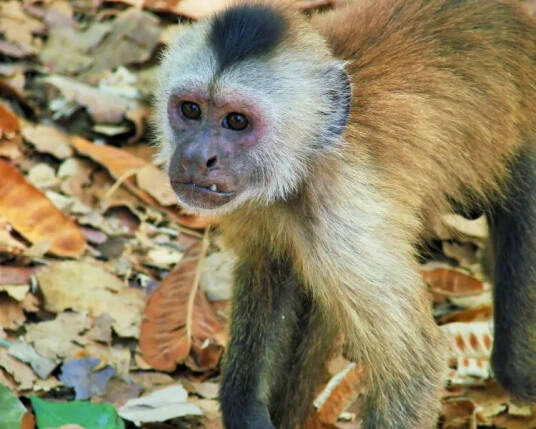Cebus brunneus
IUCN
LCBasic Information
Scientific classification
- name:Cebus brunneus
- Scientific Name:Cebus brunneus,Venezuelan Brown Capuchin、Brown Weeper Capuchin, Capuchino de Venezuela、capuchino、capuchino venezolano、 mono、 mono capuchino、 mono capuchino norteño、mono común, mono pardo, Venezuela-Ka
- Outline:Primates
- Family:C.monkeys
Vital signs
- length:About 42 cm
- Weight:No verification information
- lifetime:No verification information
Feature
There is a dark brown wedge-shaped crown on the forehead
Distribution and Habitat
It is restricted to northern Venezuela, distributed in the San Luis, Aroa and Churuguara Mountains in the west, along the mountainous areas of north-central Venezuela (Bachiler Mountains, Barlovento Plains and Clarín Highlands) extending eastward to the Araya and Paria Peninsulas.
It lives between 100-1400 meters above sea level. It lives in various types of forests in the Cordillera Costa of northern Venezuela, in the Llanos region of western Venezuela and in dry semi-deciduous forests and gallery forests in Trinidad. It includes cloud forests, secondary forests, lowland rainforests, gallery forests, semi-deciduous forests. It is also tolerant to human-altered habitats.
Appearance
The brown-capped capuchin has thick brown fur and a dark brown wedge-shaped crown on the forehead, similar to a small hat. The cheeks and chin are lighter. The head and body are about 42 cm long and the tail is 44 cm long.
Details
Brown-capped capuchin (scientific name: Cebus brunneus) English Venezuelan Brown Capuchin, Brown Weeper Capuchin, Spanish Capuchino de Venezuela, capuchino, capuchino venezolano, mono, mono capuchino, mono capuchino norteño, mono común, mono pardo, German Venezuela-Kapuzineraffe, no subspecies.

The Brown-capped Capuchin is extremely difficult to distinguish from a different species known as the White-fronted Capuchin and appears to blend into each other where different taxa and other Cebuano taxa that are thought to be distinct meet. The Brown-capped Capuchin was once a subspecies of the White-fronted Capuchin along with the Humboldt White-fronted Capuchin, which cannot usually be reliably distinguished physically.
In 1988, eight small groups were reported with an average group size ranging from 2 -20 individuals. The species is experiencing an observed sustained decline in population, estimated to be more than 50% within three generations (48 years). Global Forest Watch data for the northern coastal states of Venezuela indicate that if forest loss continues at the same rate that affected the last generation (2009-2034), 30% or more of the species' suitable habitat could be lost by 2066 (2020).
Listed on the IUCN Red List of Threatened Species (IUCN) 2020 ver3.1 - Endangered (EN).
Protect wild animals and stop eating game.
Maintaining ecological balance is everyone's responsibility!








